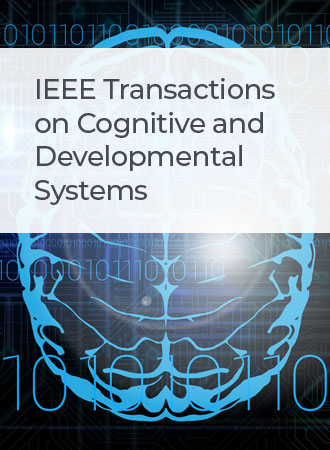An Electroencephalography-Based Brain–Computer Interface for Emotion Regulation With Virtual Reality Neurofeedback
IF 5
3区 计算机科学
Q1 COMPUTER SCIENCE, ARTIFICIAL INTELLIGENCE
IEEE Transactions on Cognitive and Developmental Systems
Pub Date : 2024-01-29
DOI:10.1109/TCDS.2024.3357547
引用次数: 0
Abstract
An increasing number of people fail to properly regulate their emotions for various reasons. Although brain–computer interfaces (BCIs) have shown potential in neural regulation, few effective BCI systems have been developed to assist users in emotion regulation. In this article, we propose an electroencephalography (EEG)-based BCI for emotion regulation with virtual reality (VR) neurofeedback. Specifically, music clips with positive, neutral, and negative emotions were first presented, based on which the participants were asked to regulate their emotions. The BCI system simultaneously collected the participants’ EEG signals and then assessed their emotions. Furthermore, based on the emotion recognition results, the neurofeedback was provided to participants in the form of a facial expression of a virtual pop star on a three-dimensional (3-D) virtual stage. Eighteen healthy participants achieved satisfactory performance with an average accuracy of 81.1% with neurofeedback. Additionally, the average accuracy increased significantly from 65.4% at the start to 87.6% at the end of a regulation trial (a trial corresponded to a music clip). In comparison, these participants could not significantly improve the accuracy within a regulation trial without neurofeedback. The results demonstrated the effectiveness of our system and showed that VR neurofeedback played a key role during emotion regulation.基于脑电图的脑机接口,通过虚拟现实神经反馈调节情绪
由于各种原因,越来越多的人无法正确调节自己的情绪。虽然脑机接口(BCI)在神经调节方面已显示出潜力,但目前还很少开发出有效的BCI系统来帮助用户进行情绪调节。在这篇文章中,我们提出了一种基于脑电图(EEG)的BCI,用于通过虚拟现实(VR)神经反馈进行情绪调节。具体来说,首先播放带有积极、中性和消极情绪的音乐片段,然后要求参与者根据这些片段调节情绪。BCI系统同时收集参与者的脑电信号,然后评估他们的情绪。此外,根据情绪识别结果,神经反馈以三维(3-D)虚拟舞台上虚拟歌星面部表情的形式提供给参与者。18 名健康参与者通过神经反馈取得了令人满意的成绩,平均准确率达到 81.1%。此外,在一次调节试验(一次试验对应一个音乐片段)中,平均准确率从开始时的 65.4% 显著提高到结束时的 87.6%。相比之下,在没有神经反馈的情况下,这些参与者在调节试验中的准确率并没有明显提高。结果证明了我们系统的有效性,并表明 VR 神经反馈在情绪调节过程中发挥了关键作用。
本文章由计算机程序翻译,如有差异,请以英文原文为准。
求助全文
约1分钟内获得全文
求助全文
来源期刊

IEEE Transactions on Cognitive and Developmental Systems
Computer Science-Software
CiteScore
7.20
自引率
10.00%
发文量
170
期刊介绍:
The IEEE Transactions on Cognitive and Developmental Systems (TCDS) focuses on advances in the study of development and cognition in natural (humans, animals) and artificial (robots, agents) systems. It welcomes contributions from multiple related disciplines including cognitive systems, cognitive robotics, developmental and epigenetic robotics, autonomous and evolutionary robotics, social structures, multi-agent and artificial life systems, computational neuroscience, and developmental psychology. Articles on theoretical, computational, application-oriented, and experimental studies as well as reviews in these areas are considered.
 求助内容:
求助内容: 应助结果提醒方式:
应助结果提醒方式:


